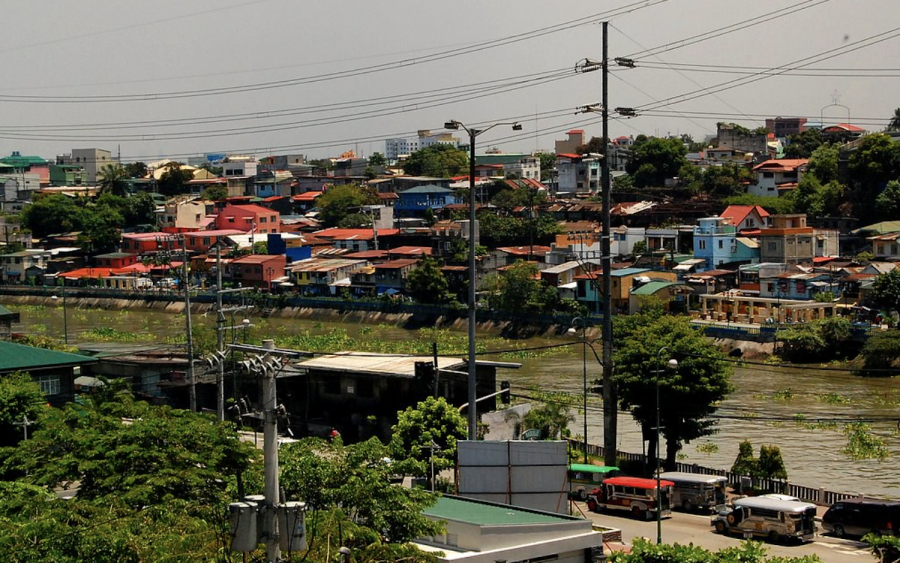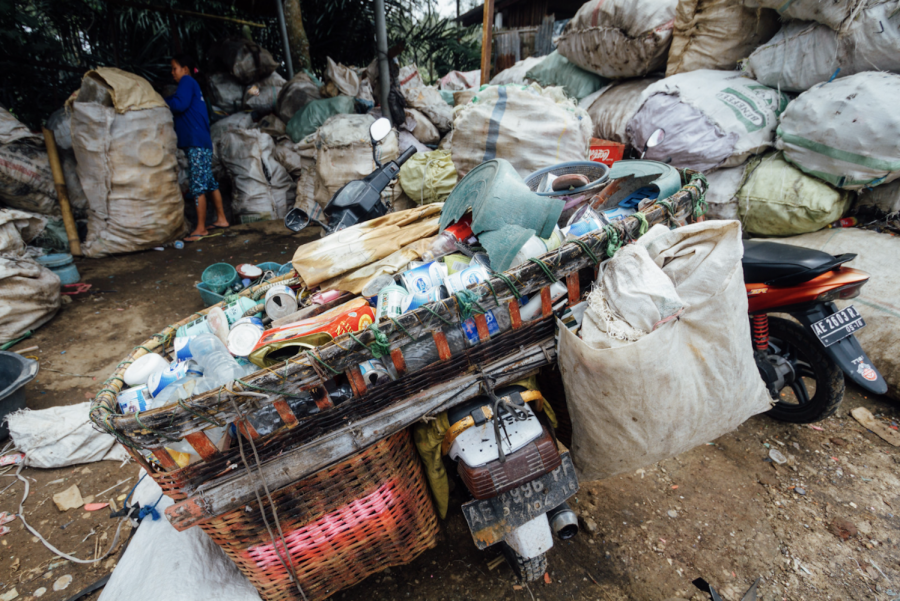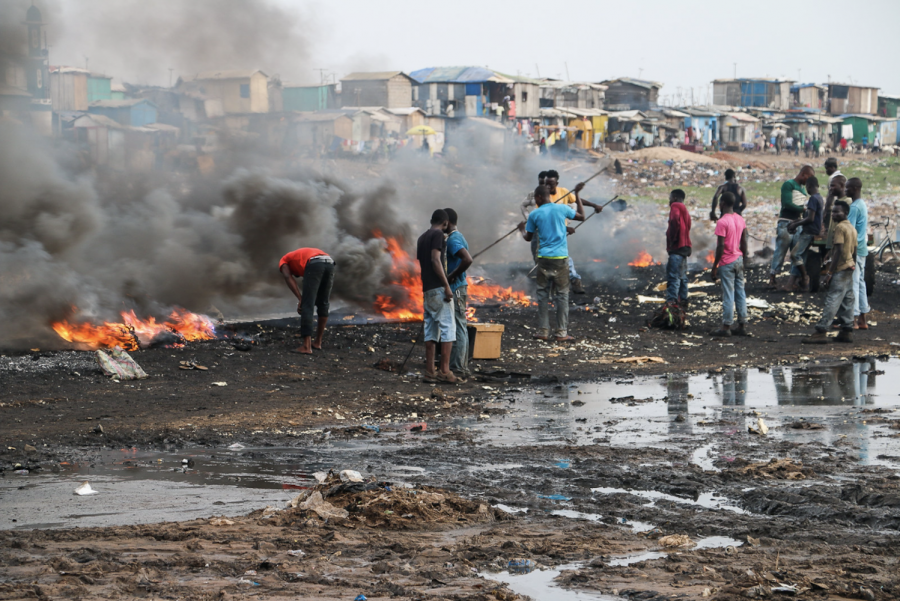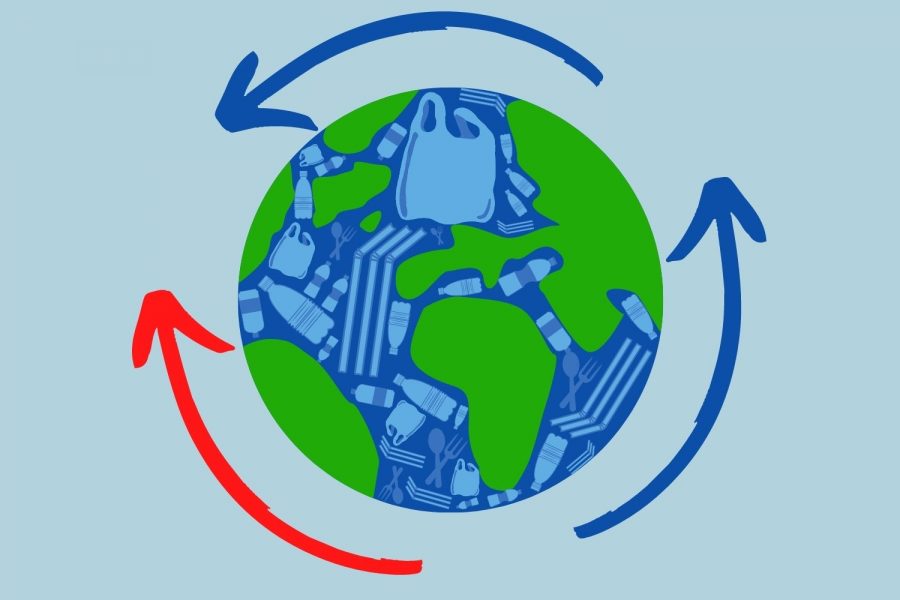The chasing arrows represent the cycle that the recycling system is supposed to be, but recyclable material often ends up in a landfill.
Beyond the blue bin: how recycling might be a waste
The irritating chug of the garbage truck before it screeches to a stop echoes through the street. Three bins stand, eagerly anticipating the truck’s arrival—one black, one green, and one blue.
This particular truck collects only the blue. It’s the color of a first-place ribbon and the largest of the three bins. Its contents range from plastic yogurt containers to aluminum cans.
As the truck’s giant metal claw secures its grip around the blue bin, the cans rattle with excitement. The irritating chug resumes, and as the truck disappears into the distance, the contents of the blue bin are out of sight and utterly out of mind.
But the plastic yogurt containers never make it to the recycling plant. In fact, more than 90% of the items in that truck won’t be recycled as only 8.7% of recyclable material is recycled in the U.S. The containers that once represented hope now lay in a landfill among millions of tons of other unrecycled waste.
“Historically, most of the waste that the U.S. exported was going to China. But in 2016, China started implementing policies that restricted the import of plastics. Where that material has gone since then has shifted quite a bit,” said Dr. Kara Lavender Law, a research professor of oceanography at Sea Education Association.
The U.S. now ships its waste to developing countries that lack the infrastructure to manage their own recycling.
“Some of our plastics go to Malaysia, Vietnam, and South Korea,” said Joanna Rosales-Jose, the Outreach and Communications Coordinator at Rethink Waste.
The effects of this transaction have proven to be detrimental to developing countries around the world. From water pollution in the Philippines and landfills in Indonesia to electronic waste in Ghana, solid waste from domestic and international sources characterizes the lives of millions of people.




